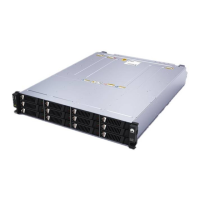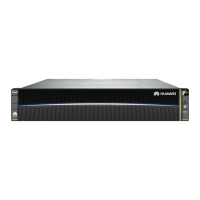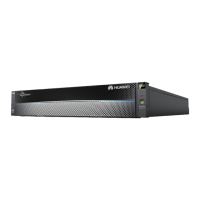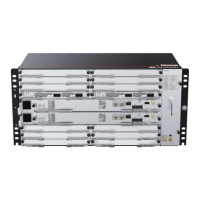N2000H V3 Appliance
User Guide
2 Installing and Removing the N2000H V3
Huawei Proprietary and Confidential
Copyright © Huawei Technologies Co., Ltd.
2.4.7 Cable Routing
Basic Rules
Different types of cables should be separately routed and bound. The cables of the same
type are routed in the same direction. Cables at a small distance can be routed in
crossover mode. When routing cables in parallel, the distance between power cables and
signal cables must not be smaller than 30 mm.
If the cables cannot be identified by the labels, attach engineering labels to distinguish
different types of cables.
Cables must be protected from burrs, cooling fins, and active accessories, which may
damage the insulation layers of cables.
Cable ties are used for binding cables. Do not connect two or more cable ties together for
binding cables. After cables are bound using cable ties, cut the excessive part and ensure
that the cuts are neat and smooth.
Cables must be properly routed, supported, or fixed in the cable trough inside a rack.
This is to prevent excessive stress on the cables or wiring terminals, loose connections,
and damage to the cable insulation layer.
Surplus parts of the cables are rolled up and bound in a proper position in the rack.
Cables are straight and tidily bundled in a rack. The bending radius of a cable varies
according to different parts of the cable.
− If a cable needs to bend in the middle, the bending radius must be at least twice the
diameter of the cable.
− If a cable bends at the output terminal of a connector or plug-in, the bending radius
must be at least five times the diameter of the cable, and the cable must be bound
before bending.
− Do not use cable ties at a place where the cables are bent. Otherwise, the cables
may break.
Common Cable Routing Methods
The methods of routing cables inside a rack are described as follows:
Determine overhead cabling and underfloor cabling based on specific conditions in the
equipment room, such as conditions of the AC power distribution frame (PDF), surge
protector, and terminal block.
Determine the overhead cabling and underfloor cabling based on specific conditions in
the equipment room.
Place all connectors of the service Ethernet cables at the bottom of the rack in order, so
that the connectors are not easily reached.
Ensure that high-density cables are not bound in crossover mode. This helps identify,
insert, or remove a node Appliance.
Cable Routing Rules

